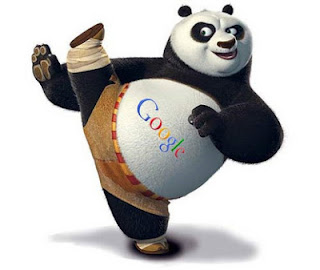Google has just rolled out Penguin 2.0, a large algorithmic
update promising to go “deeper” than the 2012 Penguin release, which put a
hurting on websites with number of manipulative links in their profile.
This prospect creates fear for many small businesses who
depend on search engine optimization (SEO) for their livelihoods. But there is
also a sense of confusion as the line often shifts and the message from Google
contradictory.
Sorting out Panda, Penguin, and Manual Actions
Google's Panda update is a different release than Penguin.
Panda is geared toward duplicative, thin, or spun content on websites.
Google's Distinguished Engineer Matt Cutts recently stated
that Google is actually pulling back on Panda because of too many false
positives. This is good for news aggregators and other sites that reuse content
appropriately and have been hit hard by the Panda filter.
Penguin is much harder to understand, focusing on backlink
patterns, anchor text, and manipulative linking tactics that provide little
value to end users. To make matters worse, Google likes to take large manual
actions just prior to major algorithm updates. In 2012 we saw the removal of
BuildMyRank from the index just prior to Penguin.
Earlier this year we saw major manual action taken against
advertorials. Last week Google announced the removal of thousands of link
selling websites and we are hearing of a manual spam penalty against Sprint
this week.
The proximity of these manual actions with major algorithmic
updates is brilliant PR as it associates them together in our memories,
discussions and debates - but they are very different things.
Is SEO Enough?
As small business owners move through the here we go again
feelings to actually decide what to do in response to Penguin 2013, sorting out
the truth is paramount. Google is clearly beating the familiar drum with the
same core messages:
Build a great website.
Make awesome content with high end-user value.
Visitors will magically appear.
But the reality is that visitors don’t magically come, at
least on any reasonable scale, without organized promotional activities. Many
excellent websites have died a slow death due to lack of promotion. And this is
where the contradictions emerge in SEO, which has demonstrated extremely high
ROI compared to other marketing channels.
Long Live Online Marketing
While discussed many times, webmasters still struggle with
shifting their link building activities to real SEO strategy. They fail to see
that SEO in 2013 is now integral to online marketing and no longer a standalone
activity.
Whereas SEO used to be about tuning a website for optimal
consumption by spiders, today’s SEO is about earning recognition, social
spread, and backlinks through excellent content marketing. This means SEO is
now ongoing, integrated, and strategic – whereas it used to be one-time,
isolated, and technical.
Real SEO
Real SEO is the prescription for those who fear Penguin
2013. Here are practical activities that need to be done every month to achieve
real SEO:
Continually Identify Audience Demand: Your SEO won't be
successful if it isn't useful. To serve a need, webmasters must understand what
the audience is seeking. Keyword research, as always, is critical. While doing
keyword research don’t over-emphasize head terms or money keywords. Focusing on
long-tail keywords renders more immediate results, increases the breadth of a
website (remember Panda), and builds authority that will ultimately help the
head term.
Content marketing: In my opinion, content marketing is the
new link building. Earn recognition, social spread, and backlinks by giving
away valuable information for free. Excellent content has high audience value
and points readers to other resources via cocitation. Video is an excellent
form of content marketing that is still under-utilized by small businesses. And
newsjacking is an emerging form of content marketing that specifically targets
hot news topics for viral spread.
Work on brand: There is increasing evidence that branded
mentions are an important legitimacy signal to Google. Promoting the brand has
traditional marketing benefits and also now helps SEO. But be careful not to
turn SEO content marketing into an endorsement, as this crosses the line. Find
traditional marketing tactics, such as press releases, to drive branding while
announcing news-worthy events.
Syndicate: The "build it and they will come"
philosophy doesn't work on an Internet with more than 500 million active domain
names. This is why even excellent content needs to be promoted. Email
marketing, social media, community engagement in forums, and guest blog posting
are efficient mechanisms for spreading the word about engaging content.
Interviews, PPC ads, and local event sponsorship will also get your name and
content noticed. Any activity that broadcasts your message, your brand, and
builds real community discussion will ultimately support SEO, and should be
considered part of the SEO process.
Conclusions
The arrival of Penguin 2013 has many small business owners
scared and confused. But SEO remains one of the best online marketing channels.
Real SEO is the path forward for those who wish to make a
long-term investment in online marketing. Forward-looking webmasters can
prepare their sites for Penguin 2014, 2015, and beyond with well-researched,
end-user focused content marketing that provides strong audience value.
Using modern syndication tactics, they can broadcast their
message, gain audience mind-share and earn recognition. By spreading valuable
content, small business can build their brands and earn bulletproof backlinks.

0 comments:
Post a Comment